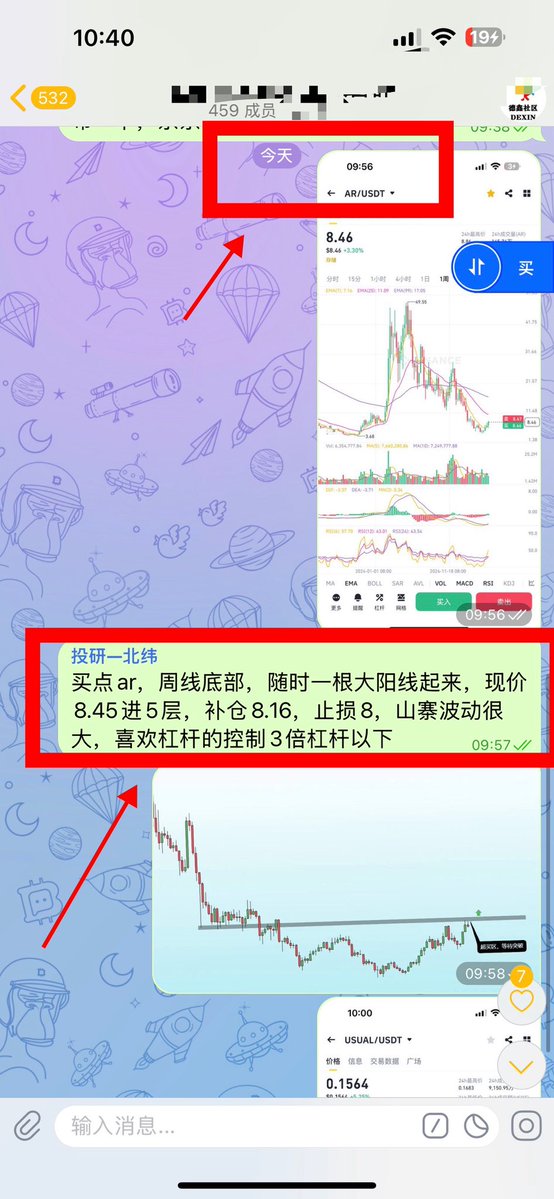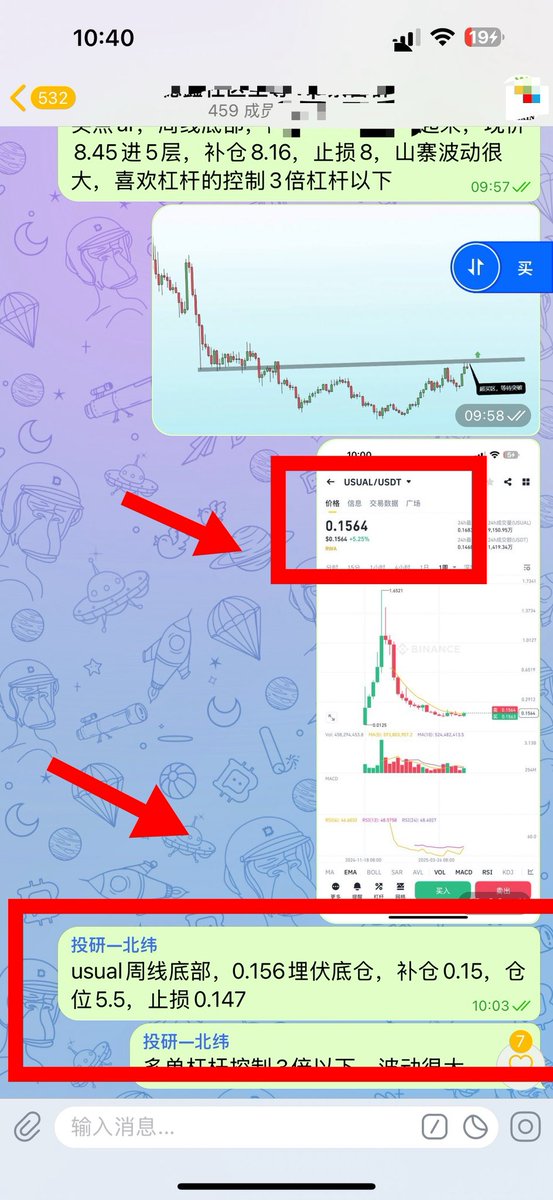
AR
Arweave 价格
$8.2910
-$0.41500
(-4.77%)
过去 24 小时的价格变化

您感觉 AR 今天会涨还是会跌?
您可以通过点赞或点踩来分享对该币种今天的涨跌预测
投票并查看结果
免责声明
本页面的社交内容 (包括由 LunarCrush 提供支持的推文和社交统计数据) 均来自第三方,并按“原样”提供,仅供参考。本文内容不代表对任何数字货币或投资的认可或推荐,也未获得欧易授权或撰写,也不代表我们的观点。我们不保证所显示的用户生成内容的准确性或可靠性。本文不应被解释为财务或投资建议。在做出投资决策之前,评估您的投资经验、财务状况、投资目标和风险承受能力并咨询独立财务顾问至关重要。过去的表现并不代表未来的结果。您的投资价值可能会波动,您可能无法收回您投资的金额。您对自己的投资选择自行承担全部责任,我们对因使用本信息而造成的任何损失或损害不承担任何责任。提供外部网站链接是为了用户方便,并不意味着对其内容的认可或控制。
请参阅我们的 使用条款 和 风险警告,了解更多详情。通过使用第三方网站(“第三方网站”),您同意对第三方网站的任何使用均受第三方网站条款的约束和管辖。除非书面明确说明,否则欧易及其关联方(“OKX”)与第三方网站的所有者或运营商没有任何关联。您同意欧易对您使用第三方网站而产生的任何损失、损害和任何其他后果不承担任何责任。请注意,使用第三方网站可能会导致您的资产损失或贬值。本产品可能无法在所有司法管辖区提供或适用。
请参阅我们的 使用条款 和 风险警告,了解更多详情。通过使用第三方网站(“第三方网站”),您同意对第三方网站的任何使用均受第三方网站条款的约束和管辖。除非书面明确说明,否则欧易及其关联方(“OKX”)与第三方网站的所有者或运营商没有任何关联。您同意欧易对您使用第三方网站而产生的任何损失、损害和任何其他后果不承担任何责任。请注意,使用第三方网站可能会导致您的资产损失或贬值。本产品可能无法在所有司法管辖区提供或适用。
Arweave 市场信息
市值
市值是通过流通总应量与最新价格相乘进行计算。市值 = 当前流通量 × 最新价
流通总量
目前该代币在市场流通的数量
市值排行
该资产的市值排名
历史最高价
该代币在交易历史中的最高价格
历史最低价
该代币在交易历史中的最低价格
24 小时最高
$8.9450
24 小时最低
$8.1000
历史最高价
$71.0600
-88.34% (-$62.7690)
最后更新日期:2022年1月4日
历史最低价
$3.7040
+123.83% (+$4.5870)
最后更新日期:2023年10月9日
Arweave 动态资讯
以下内容源自 。

ChainCatcher 链捕手
在上周六的线上交流中,又有读者问到了Virtual相关的问题。此外这段时间伴随着Virtual价格的不断上涨以及Genesis Launches成功项目的持续火爆,Virtual又开始得到了很多参与者的关注。
在我们关注这个项目潜力的同时其实也很有必要注意项目的风险。
因此,在今天这篇文章里我想更全面地分享一下我对这个项目的看法,除了它的潜力之外更重要的是分享一下我对项目风险的看法。
关于它的潜力,我在前面的文章中已经分享得比较多了,主要有:
- 团队不错,项目在持续建设和推进,哪怕在熊市中都没有间断,这是非常难得的。
- 项目有一定的盈利,再加上项目方的愿景就是把项目代币打造成生态中使用的“货币”。这个方向在我看来是对的,也就是说项目的商业模式是不错的。
- 最后也是最重要的一点,在当下的AI + Crypto项目中,不论是和同类竞品相比还是和其它AI项目相比,它的实力都是最强的,而且这个强势有逐步加大的趋势。
从这几个方面来看,在我目前所看的AI + Crypto项目中,我觉得它是最强的。
但与此同时,项目面临的潜在风险也值得注意。
最大的风险在我看来就是这种从ICO入手,使用金融方式把AI和加密生态结合在一起的方式是不是AI + Crypto赛道长期、稳定、持续可行的方式?
要验证这一点我们还需要看到更多、更强有力的AI代理在平台上被孵化出来。
什么是更强有力的AI代理?
最好就是能够出圈,不仅加密生态的用户使用,而且传统Web 2生态的用户也使用的AI代理。如果做不到这一点,那起码也得是像Uniswap那样必须依托区块链技术才能出现,其它技术无法实现,并且解决了生态中某种刚需的AI代理。
目前Virtual平台上出现的一些知名AI代理包括AIXBT在我看来都不太算。
其实这种风险在加密生态过往的发展中就已经出现过,我相信读者中有很多都亲身经历过:就是曾经红极一时的去中心化王牌项目Filecoin。
去中心化存储在我看来不管是以前,还是现在乃至未来都应该是人类社会的刚需,而且这个应用的实现理论上就应该依赖区块链这种技术。
所以当Filecoin出现时,它立刻就一炮而红。
当年Filecoin项目刚出炉时,它的条件比今天Virtual的条件还要好--------它一出道就对它的同类竞争者形成了降维打击。它在技术、团队、商业模式等各个方面几乎无可挑剔,可以说是白马中的白马。
但结果呢?
上线以后,虽然热闹了一阵子,也确实在一段时间内吸引了一些用户,但随着时间的考验人们发现在综合考虑效率、费用、可靠性、便利性等各方面之后,Filecoin比起它最大的竞争者(Web 2生态中的各类云服务)优势并不明显,因此项目逐渐冷却了下去,后续也并没有看到设想中的大量用户从传统的中心化云服务转向Filecoin。
更值得注意的是,在Filecoin之后,另一个本来名不见经传的去中心化存储项目Arweave反而后来居上,在热度、需求等方面反而超过了Filecoin。
当人们对比Arweave和Filecoin之后发现,Arweave所着眼的永久存储甚至比Filecoin在某种程度上更好地满足了某些特定领域的刚需。
Filecoin于是慢慢地就成了今天这样不温不火。
除了用Filecoin这个具体实例来对比之外,我们还可以从反向的角度来审视这个风险:
如果ICO这种金融方式是AI + Crypto一种比较合适的结合方式,为什么这种方式目前只在启动AI代理方面看到了成效,而在AI项目融资的其它细分领域却鲜有成功的案例?
我在前面的文章中曾经介绍过我去年早些时候看到过的另一个案例:用ICO的方式启动AI小模型的构建。
这个方式是我更早就关注过的,但可惜它不怎么成功,一直没有见到更多成功的案例。
现在人尽皆知的DeepSeek实际上进行的就是构建模型的工作。他们是对开源大模型进行优化,在此基础上开发了自己的模型。他们之所以能够成功除了团队实力之外还有另一个不可忽视的原因:他们早年在量化交易中挣到了不少钱,因此有足够的资金实力供自己开发这个模型。
由此可见在语言模型的开发中资金是必不可少的要素。既然如此,ICO的方式为什么在这个领域已经有人实践了,但一直不见成效?
对这些疑问我目前也没有答案,但我觉得它值得进一步求证和谨慎观察。
如果这个风险真的存在,那Virtual的未来就有一定的不确定性了。
8,818
0

ChainCatcher 链捕手
ChainCatcher 消息,根据 SoSoValue 数据,加密市场在经历两日回调之后,迎来普涨行情,24 小时涨幅普遍约达 2%至 9%。其中,Ethereum(ETH)领涨 8.64%,一度突破 2700 美元。Bitcoin(BTC)上涨 1.31%,维持在10.3 万美元附近。值得注意的是,MAG7.ssi 上涨 4.01%,DEFI.ssi 上涨 8.15%,MEME.ssi 上涨 7.49%。
其他表现亮眼的板块包括:GameFi 板块 24 小时上涨,其中,The Sandbox(SAND)、Echelon Prime(PRIME)、Decentraland(MANA)、Axie Infinity(AXS)分别上涨 10.10%、11.49%、13.03%、20.15%。DePIN 板块上涨 7.00%,板块内,Arweave(AR)、Grass(GRASS)分别上涨 12.23%、25.51%。
此外,Layer2 板块上涨 6.84%,Optimism(OP)、Starknet(STRK)分别上涨 14.10%、14.83%;DeFi 板块上涨 6.73%,Ethena(ENA)上涨 21.29%;Meme 板块上涨 6.63%,Pepe(PEPE)上涨 8.96%;Layer1 板块上涨 4.35%,Solana(SOL)、Avalanche(AVAX)、分别上涨 6.84%、8.38%;PayFi 板块上涨 3.69%,CeFi 板块上涨 1.94%,Hyperliquid(HYPE)上涨 8.08%。
反映板块历史行情的加密板块指数显示,ssiGameFi、ssiDePIN、ssiLayer2 24 小时分别上涨10.30%、7.74%、7.03%,周回报率分别为 40.36%、25.40%、29.98%。
9.87万
0

风无向🎒
还有哪些不错的基建类项目?最近看了下 @irys_xyz ,以前是基于 Arweave 构建。
现在独立出来做L1.本身之前做储存这块就技术实力非常强。
IRYS将低成本存储、可验证计算和 AI 协调融为一体,不仅永久保存数据,还能让数据“流动”起来,赋能开发者打造动态、实时的区块链应用。
其实储存这块一直比较刚需的一块,储存类的L1除了之前的AR和FIL,整体估值都比较高。之前的证明方式都偏向于存储证明形式挖矿。
IRYS相比较有点区别,做了独立的IRYSVM,更偏向于AI和IP领域。
说的更专业拗口点就是:低成本存储层与高性能、兼容 EVM 的执行层(IrysVM)相结合,Irys 实现了数据可编程性。
还有一点,Dovey的primitive投了。
先关注起来等待后续的进展吧,个人比较看好。
6.35万
34
AR 计算器


Arweave 价格表现 (美元)
Arweave 当前价格为 $8.2910。Arweave 的价格在过去 24 小时内下跌了 -4.77%。目前,Arweave 市值排名为第 88 名,实时市值为 $5.42亿,流通供应量为 65,454,186 AR,最大供应量为 66,000,000 AR。我们会实时更新 Arweave/USD 的价格。
今日
-$0.41500
-4.77%
7 天
+$1.4600
+21.37%
30 天
+$3.0630
+58.58%
3 个月
-$0.76700
-8.47%
关于 Arweave (AR)
此评级是欧易从不同来源收集的汇总评级,仅供一般参考。欧易不保证评级的质量或准确性。欧易无意提供 (i) 投资建议或推荐;(ii) 购买、出售或持有数字资产的要约或招揽;(iii) 财务、会计、法律或税务建议。包括稳定币和 NFT 的数字资产容易受到市场波动的影响,风险较高,波动较大,可能会贬值甚至变得一文不值。数字资产的价格和性能不受保证,且可能会发生变化,恕不另行通知。您的数字资产不受潜在损失保险的保障。 历史回报并不代表未来回报。欧易不保证任何回报、本金或利息的偿还。欧易不提供投资或资产建议。您应该根据自身的财务状况仔细考虑交易或持有数字资产是否适合您。具体情况请咨询您的专业法务、税务或投资人士。
展开更多
- 官网
- 白皮书
- Github
- 区块浏览器
关于第三方网站
关于第三方网站
通过使用第三方网站(“第三方网站”),您同意对第三方网站的任何使用均受第三方网站条款的约束和管辖。除非书面明确说明,否则 OKX 及其关联方(“OKX”)与第三方网站的所有者或运营商没有任何关联。您同意 OKX 对您使用第三方网站而产生的任何损失、损害和任何其他后果不承担任何责任。请注意,使用第三方网站可能会导致您的资产损失或贬值。
Arweave 常见问题
Arweave 今天值多少钱?
目前,一个 Arweave 价值是 $8.2910。如果您想要了解 Arweave 价格走势与行情洞察,那么这里就是您的最佳选择。在欧易探索最新的 Arweave 图表,进行专业交易。
数字货币是什么?
数字货币,例如 Arweave 是在称为区块链的公共分类账上运行的数字资产。了解有关欧易上提供的数字货币和代币及其不同属性的更多信息,其中包括实时价格和实时图表。
数字货币是什么时候开始的?
由于 2008 年金融危机,人们对去中心化金融的兴趣激增。比特币作为去中心化网络上的安全数字资产提供了一种新颖的解决方案。从那时起,许多其他代币 (例如 Arweave) 也诞生了。
Arweave 的价格今天会涨吗?
查看 Arweave 价格预测页面,预测未来价格,帮助您设定价格目标。
ESG 披露
ESG (环境、社会和治理) 法规针对数字资产,旨在应对其环境影响 (如高能耗挖矿)、提升透明度,并确保合规的治理实践。使数字代币行业与更广泛的可持续发展和社会目标保持一致。这些法规鼓励遵循相关标准,以降低风险并提高数字资产的可信度。
资产详情
名称
OKcoin Europe LTD
相关法人机构识别编码
54930069NLWEIGLHXU42
代币名称
Arweave
共识机制
Arweave is present on the following networks: arweave, ethereum.
Arweave employs a unique Proof of Access (PoA) consensus mechanism, which integrates a requirement for miners to provide cryptographic proof of access to historical data, known as a "recall block." This ensures that miners contribute to both data storage and network security by storing and verifying historical data. Core Components: 1. Proof of Access (PoA): Recall Block Verification: During mining, miners must retrieve and validate a randomly selected "recall block" from Arweave’s data history, proving they retain access to stored data. This process secures the network while emphasizing long-term data availability. Enhanced Proof of Work (PoW): PoA builds upon traditional PoW by requiring miners to demonstrate access to previously stored data, adding a storage-focused layer to network security and incentivizing distributed data retention. 2. Data-Centric Mining Incentives: Distributed Storage: The PoA design encourages miners to store a broad history of blocks, as possessing more recall blocks enhances their probability of successfully mining new blocks and earning rewards.
The Ethereum network uses a Proof-of-Stake Consensus Mechanism to validate new transactions on the blockchain. Core Components 1. Validators: Validators are responsible for proposing and validating new blocks. To become a validator, a user must deposit (stake) 32 ETH into a smart contract. This stake acts as collateral and can be slashed if the validator behaves dishonestly. 2. Beacon Chain: The Beacon Chain is the backbone of Ethereum 2.0. It coordinates the network of validators and manages the consensus protocol. It is responsible for creating new blocks, organizing validators into committees, and implementing the finality of blocks. Consensus Process 1. Block Proposal: Validators are chosen randomly to propose new blocks. This selection is based on a weighted random function (WRF), where the weight is determined by the amount of ETH staked. 2. Attestation: Validators not proposing a block participate in attestation. They attest to the validity of the proposed block by voting for it. Attestations are then aggregated to form a single proof of the block’s validity. 3. Committees: Validators are organized into committees to streamline the validation process. Each committee is responsible for validating blocks within a specific shard or the Beacon Chain itself. This ensures decentralization and security, as a smaller group of validators can quickly reach consensus. 4. Finality: Ethereum 2.0 uses a mechanism called Casper FFG (Friendly Finality Gadget) to achieve finality. Finality means that a block and its transactions are considered irreversible and confirmed. Validators vote on the finality of blocks, and once a supermajority is reached, the block is finalized. 5. Incentives and Penalties: Validators earn rewards for participating in the network, including proposing blocks and attesting to their validity. Conversely, validators can be penalized (slashed) for malicious behavior, such as double-signing or being offline for extended periods. This ensures honest participation and network security.
奖励机制与相应费用
Arweave is present on the following networks: arweave, ethereum.
Arweave’s economic model incentivizes miners to contribute to data storage through upfront storage fees and ongoing block rewards, supporting the network’s mission of providing permanent and accessible data storage. Incentive Mechanisms: 1. One-Time Storage Fees: Permanent Data Storage: Users pay a one-time, upfront fee in AR tokens, calculated based on data size and projected storage costs. This fee funds indefinite data storage on the network. Endowment Pool: A portion of each storage fee is allocated to an endowment pool, covering future storage costs as technology advances, ensuring sustainable, permanent data storage. 2. Mining Rewards: Block Rewards: Miners earn AR tokens for successfully mining blocks, incentivizing them to store historical data and maintain network integrity. Applicable Fees: 1. Data Storage Fees: Market-Based Cost: Storage fees in AR are set by data size and projected long-term costs, covering the initial and future costs of data permanence.
Ethereum, particularly after transitioning to Ethereum 2.0 (Eth2), employs a Proof-of-Stake (PoS) consensus mechanism to secure its network. The incentives for validators and the fee structures play crucial roles in maintaining the security and efficiency of the blockchain. Incentive Mechanisms 1. Staking Rewards: Validator Rewards: Validators are essential to the PoS mechanism. They are responsible for proposing and validating new blocks. To participate, they must stake a minimum of 32 ETH. In return, they earn rewards for their contributions, which are paid out in ETH. These rewards are a combination of newly minted ETH and transaction fees from the blocks they validate. Reward Rate: The reward rate for validators is dynamic and depends on the total amount of ETH staked in the network. The more ETH staked, the lower the individual reward rate, and vice versa. This is designed to balance the network's security and the incentive to participate. 2. Transaction Fees: Base Fee: After the implementation of Ethereum Improvement Proposal (EIP) 1559, the transaction fee model changed to include a base fee that is burned (i.e., removed from circulation). This base fee adjusts dynamically based on network demand, aiming to stabilize transaction fees and reduce volatility. Priority Fee (Tip): Users can also include a priority fee (tip) to incentivize validators to include their transactions more quickly. This fee goes directly to the validators, providing them with an additional incentive to process transactions efficiently. 3. Penalties for Malicious Behavior: Slashing: Validators face penalties (slashing) if they engage in malicious behavior, such as double-signing or validating incorrect information. Slashing results in the loss of a portion of their staked ETH, discouraging bad actors and ensuring that validators act in the network's best interest. Inactivity Penalties: Validators also face penalties for prolonged inactivity. This ensures that validators remain active and engaged in maintaining the network's security and operation. Fees Applicable on the Ethereum Blockchain 1. Gas Fees: Calculation: Gas fees are calculated based on the computational complexity of transactions and smart contract executions. Each operation on the Ethereum Virtual Machine (EVM) has an associated gas cost. Dynamic Adjustment: The base fee introduced by EIP-1559 dynamically adjusts according to network congestion. When demand for block space is high, the base fee increases, and when demand is low, it decreases. 2. Smart Contract Fees: Deployment and Interaction: Deploying a smart contract on Ethereum involves paying gas fees proportional to the contract's complexity and size. Interacting with deployed smart contracts (e.g., executing functions, transferring tokens) also incurs gas fees. Optimizations: Developers are incentivized to optimize their smart contracts to minimize gas usage, making transactions more cost-effective for users. 3. Asset Transfer Fees: Token Transfers: Transferring ERC-20 or other token standards involves gas fees. These fees vary based on the token's contract implementation and the current network demand.
信息披露时间段的开始日期
2024-04-20
信息披露时间段的结束日期
2025-04-20
能源报告
能源消耗
629406.00000 (kWh/a)
可再生能源消耗
15.116111393 (%)
能源强度
0.00000 (kWh)
主要能源来源与评估体系
To determine the proportion of renewable energy usage, the locations of the nodes are to be determined using public information sites, open-source crawlers and crawlers developed in-house. If no information is available on the geographic distribution of the nodes, reference networks are used which are comparable in terms of their incentivization structure and consensus mechanism. This geo-information is merged with public information from the European Environment Agency (EEA) and thus determined. The intensity is calculated as the marginal energy cost wrt. one more transaction.
能源消耗来源与评估体系
The energy consumption of this asset is aggregated across multiple components:
For the calculation of energy consumptions, the so called “bottom-up” approach is being used. The nodes are considered to be the central factor for the energy consumption of the network. These assumptions are made on the basis of empirical findings through the use of public information sites, open-source crawlers and crawlers developed in-house. The main determinants for estimating the hardware used within the network are the requirements for operating the client software. The energy consumption of the hardware devices was measured in certified test laboratories. When calculating the energy consumption, we used - if available - the Functionally Fungible Group Digital Token Identifier (FFG DTI) to determine all implementations of the asset of question in scope and we update the mappings regulary, based on data of the Digital Token Identifier Foundation.
To determine the energy consumption of a token, the energy consumption of the network(s) ethereum is calculated first. Based on the crypto asset's gas consumption per network, the share of the total consumption of the respective network that is assigned to this asset is defined. When calculating the energy consumption, we used - if available - the Functionally Fungible Group Digital Token Identifier (FFG DTI) to determine all implementations of the asset of question in scope and we update the mappings regulary, based on data of the Digital Token Identifier Foundation.
排放报告
DLT 温室气体排放范围一:可控排放
0.00000 (tCO2e/a)
DLT 温室气体排放范围二:外购排放
259.31279 (tCO2e/a)
温室气体排放强度
0.00000 (kgCO2e)
主要温室气体来源与评估体系
To determine the proportion of renewable energy usage, the locations of the nodes are to be determined using public information sites, open-source crawlers and crawlers developed in-house. If no information is available on the geographic distribution of the nodes, reference networks are used which are comparable in terms of their incentivization structure and consensus mechanism. This geo-information is merged with public information from the European Environment Agency (EEA) and thus determined. The intensity is calculated as the marginal emission wrt. one more transaction.
AR 计算器





















社媒平台热度